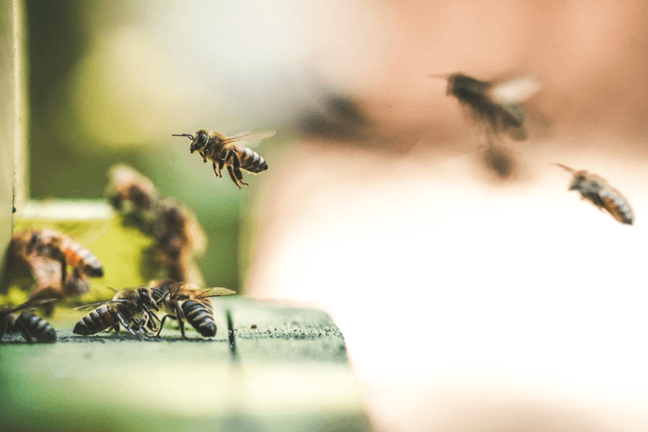In nature, insects and animals don't need our help. They can make their own nests, dig their own burrows and scratch out holes to live in.
But in the city and suburbs, they do need a bit of a helping hand. When people move into the suburbs and build houses, schools and shops - they end up removing 'green space' and insect and animal habitats for new developments, so it's important for us to create new areas for living creatures to call home. Our gardens can support lots of different and wonderful insect and animal species.
In addition to planting a variety of different animal and insect attracting plants, we can also build 'Habitat Hotels' (sometimes also known as Insect Hotels)
Most people call these Habitat Hotels (or species hotels), these can be wonderful addition to gardens, parks, and schools to encourage and support our natural wildlife.
Remember: As budding ecologists, it's important to observe and not touch! Don't put your fingers into holes in the garden or habitat hotel and don't disturb or touch insects or other wildlife.

What you will learn as you look around the garden
- You are apart of a broader ecosystem (community), this means that the world around you can be food or shelter for something else.
- Looking through the garden if you see dead and/or decaying wood, it can be a food source for insects, which are in turn food for reptiles, mammals and birds. It's the circle of life.
- Trees, both alive and dead, can contain hollowed out areas which can be habitats for all types of creatures. These holes can take many years to develop so it's important to retain as many of these trees as possible in our gardens and parks.
- You'll be amazed at just how many insects and animals may be living in your garden. From ants and earthworms to butterflies, beetles and bees. Many of these insects are beneficial and play important roles in reducing the numbers of pest insects and pollinating flowers.
Let's get started!
Where to set up your habitat hotel
Take a look around your garden and see where you could locate a habitat hotel. The best places are in a protected spot in semi-shade, such as near a hedge or underneath a tree. Being near a pond or bird bath is also beneficial.
Some insects, such as solitary bees, prefer a sunnier spot, so a hotel for them can be positioned in a warm sunny location.
Choose a level, even surface
The Habitat Hotel may end up fairly heavy, so will need a firm base. For a basic structure you can use old pallets. For a basic structure you can use old pallets, fence palings or timber shelves. The more recycled materials you can use the better! Ensure that the structure is stable before filling it with nesting materials. If you use more than one pallet ensure there is an opening and that the structure is stable by securing one to the other.
What materials you can use
- Dead wood and loose bark: Dead wood is an increasingly rare habitat. This material is essential for the larvae of wood-boring beetles, such as the stag beetle. Dead wood can also support many fungi, which help break down the woody material. Loose bark is also a firm favourite with our bugs.
- Holes for solitary bees: There are lots of different species of bees which like to be alone these guys are also excellent pollinators.The female bee recreates by laying an egg on top of a mass of pollen at the end of a hollow tube. The female bee then seals up the entrance with a plug of mud. A long hole can hold several such cells. So keep an eye out for hollow stems (eg old bamboo canes, or holes drilled into blocks of wood) these will all make good nest sites for solitary bees.
- Straw & Hay: Can provide many opportunities for invertebrates to burrow into the straw and find safe hibernation sites.
- Dry and Dead Leaves: You will find a variety of invertebrates will love this as a home, as its very similar to the litter on the forest floor.
- Frog hole: frogs love eating snails, slugs and insects. In addition to a pond, frogs will appreciate damp, shady spots to hide in, which can be created with logs, rocks and dense plants.
